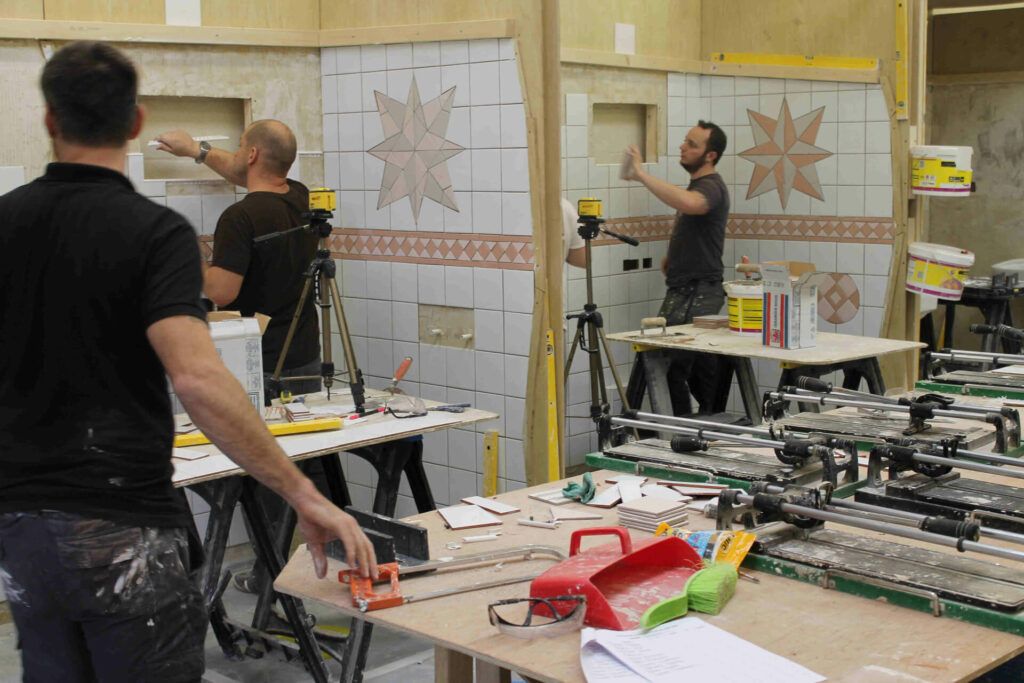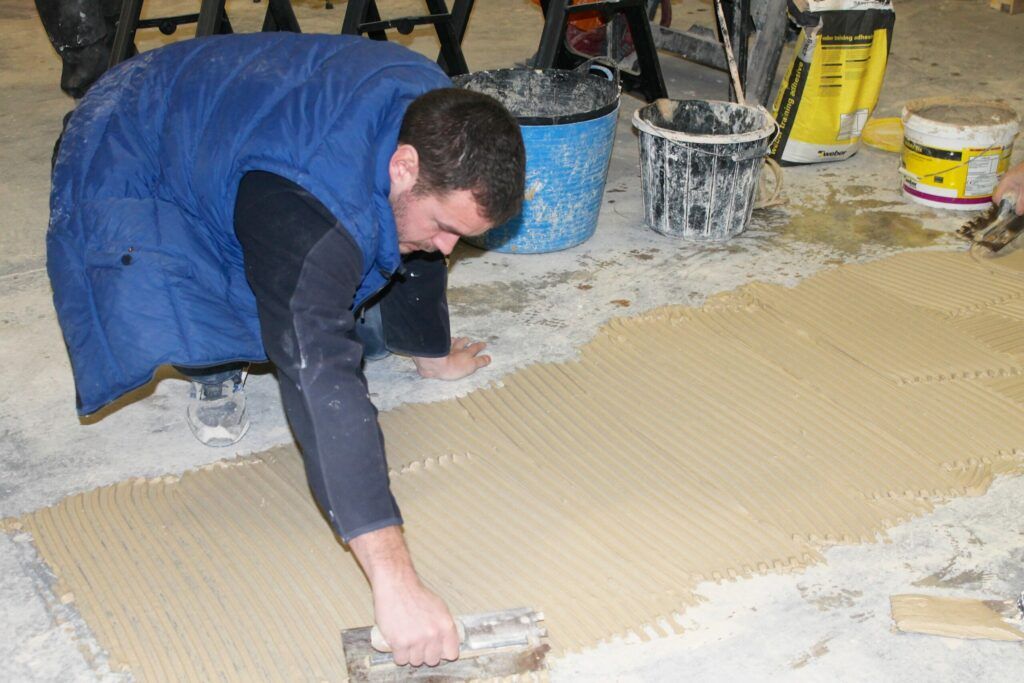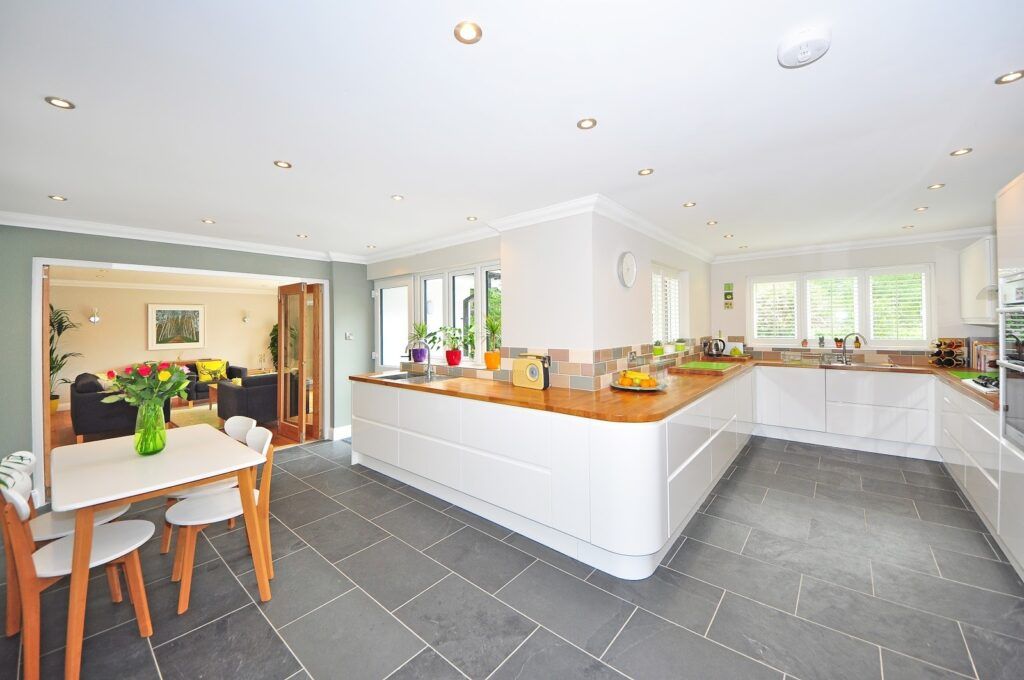Starting a Tiling Business? Think about Networking (just keep your distance ?)
With the business and economic climate we are currently experiencing, it may seem like a bad time to consider starting up a new tiling business and becoming a self-employed tiler. But, for the construction industry, there appears to be some bright light at the end of the tunnel compared with other business sectors who are experiencing difficult times.
Since March this year, the world of work in the UK has changed – shaken, stirred, turned upside down and inside out and for many people who were in employment then, have now found themselves without employment as their employers have suffered an economic Tsunami.
If you have been considering changing career, attaining a new skill or simply need to find some form of employment, then seriously consider the option of becoming a highly skilled floor and wall tiler.
The tiling industry is a part of the ever growing UK construction industry – with the demand for building new homes across the country and the domestic markets’ increased demand for interior and exterior makeovers, now is a good time to think about diving in and taking the plunge on running your own floor and wall tiling business.
Finding the right course that will give both the practical skills and theoretical skills is key to your future success and with a considered investment in our tiling training courses you are more than halfway to building a successful business.
In addition to the practical skills and detailed course information acquired at UK Pro Tiling Training there is continued support with the (optional) Elite Aftercare Package to give you peace of mind and a professional ‘help line’ for when you need it.
In addition to the practicalities of starting a business (take a look at www.gov.uk/set-up-business ), what are the personal qualities you need to run a tiling business or be a successful self-employed tiler? Qualities such as self-motivation, the ability to work long hours, offer fantastic customer service, develop good negotiating skills and have a great understanding of your market (i.e. your customer requirements) these personal attributes are key to being successfully self-employed and having a great business.
If you are looking to be self-employed only without the additional responsibilities of employing people, then learning how to price up and quote for potential jobs should be a bit easier than having to consider what each job will cost to cover all your material and labour costs. But whether self-employed or running a tiling business employing people, the basic business skills crossover. Most importantly, get your name (or business name) out there! Marketing costs can be expensive and you don’t want to blow your budget. Use social media platforms, word of mouth, place a sign with your name, contact details and profession where you are working and advertise on your vehicle before placing costly adverts.
So what is the importance of networking when running your own business?
Well, by having knowledge of and contact with good quality suppliers who will negotiate with you on the best prices, advise on current market trends and put you in contact with other businesses that you could work alongside with ( for example kitchen and bathroom fitters, decorators, builders) will only grow your reputation when working alongside these businesses. Consider widening your network by joining a local business support group and attending professional events and trade fairs (when it is possible to do so) and keeping up to date with the latest tiling trends will impress potential clients.
If you are a UK Pro Tiling Training trained floor and wall tiler, your toolbox will be filled with all the skills, knowledge and continued professional support then your tiling business is bound to thrive.


 Construction Skills Certification Scheme (CSCS)
Construction Skills Certification Scheme (CSCS) Using floor tiles, either plain or patterned in the hallway will need careful preparation and planning. Most floor tiles are larger than wall tiles and most importantly choose a tile that has a non-slip finish. The style and type of floor tile will depend on the property and client choice.
Using floor tiles, either plain or patterned in the hallway will need careful preparation and planning. Most floor tiles are larger than wall tiles and most importantly choose a tile that has a non-slip finish. The style and type of floor tile will depend on the property and client choice. So why choose tiles over the more common (and popular) brick or paved exteriors? Well if you are looking to add a bit of style, individuality and uniqueness to your outside space, tiles will give you a wider choice of style, colour and pattern than the more usual brick and paved look.
So why choose tiles over the more common (and popular) brick or paved exteriors? Well if you are looking to add a bit of style, individuality and uniqueness to your outside space, tiles will give you a wider choice of style, colour and pattern than the more usual brick and paved look.